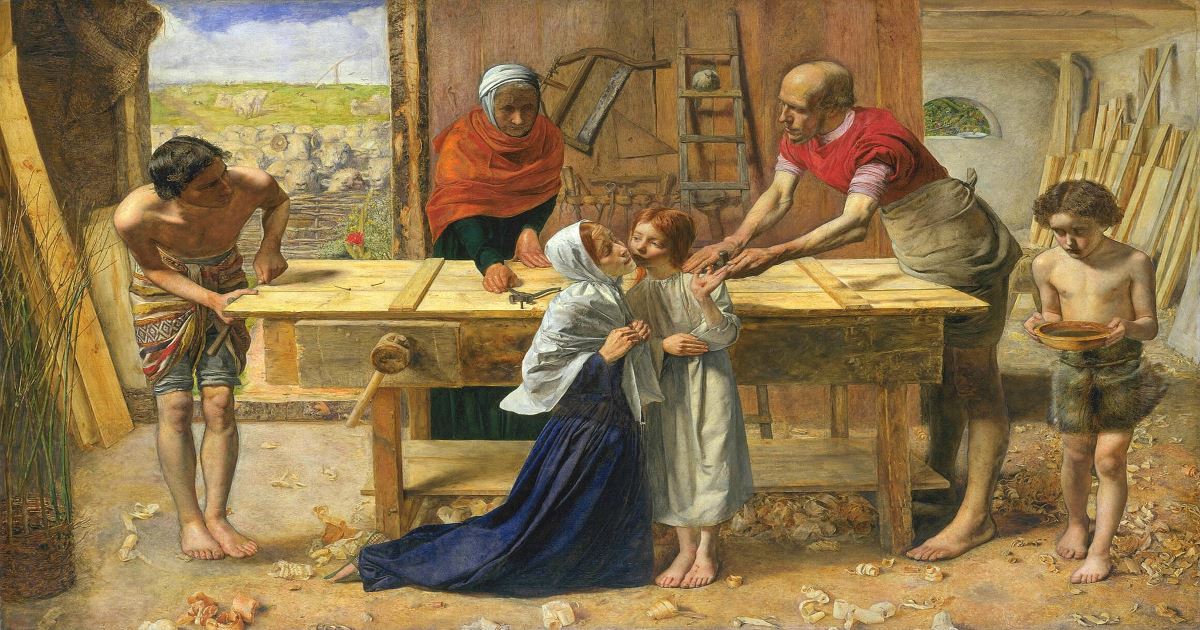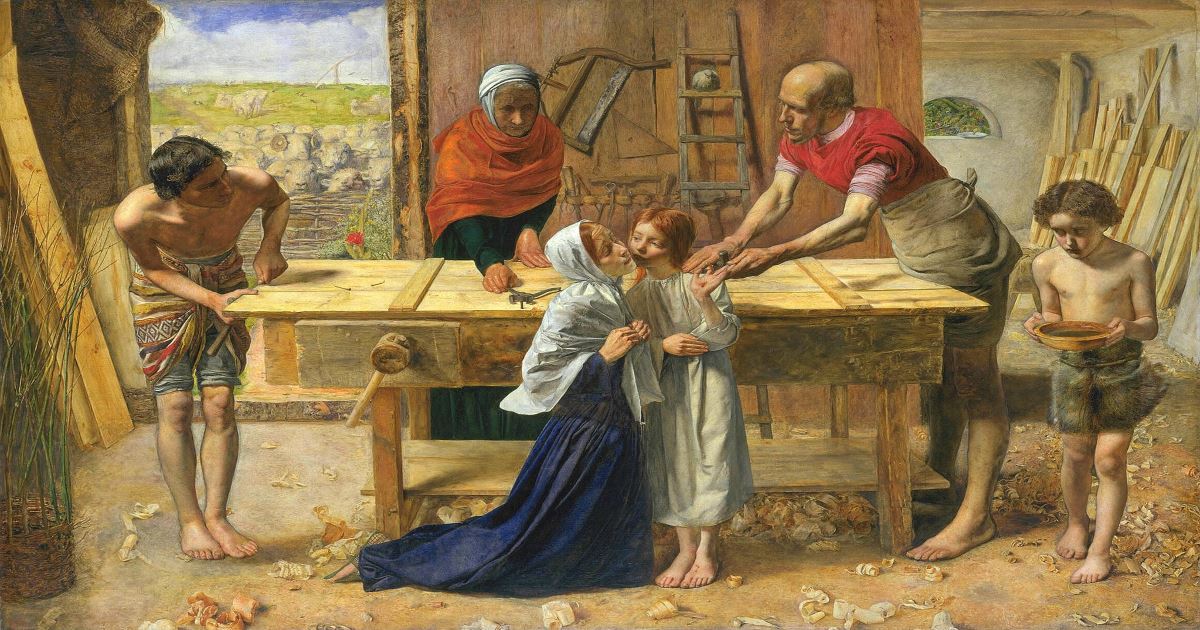Curious about the carpentry work Jesus did? Well, you’ve come to the right place! Let’s dive into the intriguing world of Jesus’s carpentry skills and discover what kind of work he was known for.
When we think of Jesus, most of us picture him as a spiritual leader and healer. But did you know that before his public ministry, Jesus worked as a carpenter? That’s right! Carpentry was his trade, and he honed his skills in this noble profession.
Now, you might be wondering what kind of carpentry work Jesus specialized in. From crafting essential household items to constructing sturdy buildings, Jesus was a master of his trade. Join me as we explore the fascinating world of Jesus’s carpentry work and unravel the secrets of his craftsmanship.
When it comes to the carpentry work of Jesus, historical records provide limited information. While the Bible mentions that Jesus was the son of a carpenter and was referred to as a carpenter himself, it does not specify the exact type of carpentry he practiced. However, it is believed that Jesus would have been skilled in various aspects of carpentry, including constructing furniture, buildings, and tools, as carpenters during that time were versatile craftsmen.

The Carpentry Work of Jesus: Unveiling the Master Craftsman
Jesus of Nazareth is widely known for his teachings, miracles, and profound impact on the course of human history. However, little is known about his early life and the profession he pursued before embarking on his ministry. As history tells us, Jesus was a skilled carpenter, honing his craft in the humble town of Nazareth. In this article, we delve into the fascinating world of Jesus’ carpentry work and explore the nuances of his trade. Join us as we uncover the hidden details of the Master Craftsman’s early life.
The Carpenters of Nazareth: A Legacy Passed Down
In order to appreciate the depth of Jesus’ carpentry work, it is essential to understand the historical context of Nazareth. Located in the region of Galilee, Nazareth was a humble village populated by artisans, tradespeople, and farmers. It was here that Jesus grew up, learning the trade from his earthly father, Joseph.
As a carpenter, Jesus would have been adept at working with various materials such as wood, stone, and metal. His work primarily involved crafting furniture, constructing homes, and undertaking small-scale woodworking projects. The community of Nazareth would have relied on his skill and expertise for their everyday needs, creating a strong bond of trust and camaraderie.
Jesus’ carpentry work was not just a means to make a living; it was an extension of his divine purpose. The Apostle Paul later described Jesus as the “master builder,” suggesting a connection between his earthly craftsmanship and the spiritual legacy he would leave behind. Through his skilled hands, Jesus not only created functional pieces of furniture and structures but also shaped the lives and hearts of those around him.
The Tools of a Master: Carpentry in Jesus’ Time
The art of carpentry during Jesus’ time relied on the use of various tools and techniques. While exact details of Jesus’ workshop are lost to history, we can speculate on the equipment he would have used based on the practices of his era.
One of the most crucial tools in a carpenter’s arsenal was the adze, a versatile cutting tool used for shaping and smoothing wood. The adze was employed for tasks such as forming planks, creating joints, and removing rough surfaces. The saw, another essential tool, came in different forms, including the pit saw and the smaller hand saw.
To fasten pieces of wood together, carpenters would use wooden pegs or dowels, as nails were expensive and not commonly used. Drills, chisels, and mallets were used for making holes, carving intricate designs, and fitting joinery. The level and square ensured precise measurements and alignment, while the measuring tape or cord determined the dimensions of the structures being built.
Carpentry in Jesus’ time integrated a deep understanding of local materials and construction techniques. As a master craftsman, Jesus would have been adept at working with the available resources, ensuring durability and longevity in his creations.
Building with Purpose: The Symbolism in Jesus’ Carpentry
While Jesus’ carpentry work had practical applications, it also possessed a deeper significance. His creations were not simply functional; they were imbued with symbolic meanings that reflected his ministry and teachings.
One example of this symbolism can be found in the construction of the humble wooden cross. As a carpenter, Jesus held the knowledge and skillset to fashion the very instrument on which he would sacrifice himself for the salvation of humanity. The cross serves as a powerful symbol of redemption, love, and sacrifice, echoing the core principles of Jesus’ teachings.
Furthermore, Jesus’ craftsmanship extended beyond physical structures. Just as he built furniture and homes for the people of Nazareth, he also sought to build a spiritual foundation for humanity. Through his teachings and acts of love, he molded hearts and transformed lives, leaving an indelible mark on the world.
Legacy of the Master Carpenter: Impact and Inspiration
Jesus’ carpentry work may have been overshadowed by his ministry and miracles, but its impact cannot be understated. His craftsmanship exemplified excellence, attention to detail, and unwavering dedication. These qualities continue to inspire artisans and tradespeople to this day, reminding them that their work, no matter how seemingly mundane, can be a testament to their faith and dedication.
Today, we can honor the legacy of the Master Carpenter by embracing the same qualities in our own pursuits. Whether we find ourselves working with our hands or engaging in professions that require skill and craftsmanship, let us remember Jesus’ example. Through our work, we have the opportunity to shape lives, build communities, and leave a lasting impact on the world, just as he did.
The Influence of Jesus’ Carpentry: Connecting the Past to the Present
Despite the limited knowledge we possess about Jesus’ carpentry work, its influence can still be felt in the contemporary world. His legacy serves as a reminder that every occupation can be an avenue for service, love, and transformation.
Embracing the Virtues of the Master Craftsman: a Testament to Faith and Dedication
Jesus’ carpentry work exemplified virtues that extend far beyond the realm of physical craftsmanship. His dedication, attention to detail, and commitment to excellence serve as an inspiration for professionals in any field.
The Spiritual Significance of Everyday Work: Finding Purpose and Meaning
Jesus’ ministry transcended the confines of his carpentry shop, demonstrating that one’s occupation can be an expression of faith and a vehicle for spiritual growth. By understanding the deeper significance of our work, we can find purpose and meaning in even the most mundane tasks.
Carpentry as a Reflection of Jesus’ Humanity: a Reminder of His Earthly Journey
Jesus’ carpentry work offers us a glimpse into his human experience and the humble beginnings from which he emerged. It reminds us that he willingly embraced the labor and toil of a tradesperson, forging a connection with people from all walks of life.
Key Takeaways: What Kind of Carpentry Work Did Jesus Do?
- Jesus was a skilled carpenter who worked with wood.
- He likely built and repaired various wooden structures, such as doors and furniture.
- Jesus may have also worked on construction projects, helping to build homes or temples.
- As a carpenter, Jesus would have used tools like saws, hammers, and chisels.
- His work as a carpenter taught him valuable lessons about craftsmanship, patience, and attention to detail.
Frequently Asked Questions
Curious about the carpentry work Jesus did? Find answers to your questions below!
1. What kind of skills did Jesus have as a carpenter?
As a carpenter, Jesus possessed a wide range of skills. In his time, carpentry involved more than just woodworking. He would have been proficient in tasks such as measuring and cutting wood, joining and assembling structures, and shaping various materials. Jesus likely had knowledge of different types of wood and their properties to ensure quality craftsmanship.
It’s important to note that carpentry during Jesus’ time extended beyond simple home repairs. Jesus would have been skilled at constructing buildings, crafting furniture, and even creating tools and agricultural implements to support his community.
2. Did Jesus teach others his trade as a carpenter?
While there is no specific information about Jesus teaching carpentry to others, it is possible that he may have shared his knowledge and skills with his disciples or others in his community. Jesus was known for his willingness to teach and impart wisdom, so it wouldn’t be surprising if he had shared some of his carpentry expertise.
Whether or not he actively taught carpentry, Jesus’ life as a carpenter likely served as an example of humility and hard work, influencing those around him to value craftsmanship and the dignity of labor.
3. Were there any significant construction projects associated with Jesus’ carpentry work?
While specific construction projects aren’t mentioned in historical texts, it is believed that Jesus would have played a significant role in building and repairing structures within his community. He likely worked on the construction of houses, synagogues, and other buildings that were essential to the daily life of the people.
Considering the importance of carpentry in that era, Jesus would have been involved in various projects that served the needs of his community, ensuring their well-being and providing a stable infrastructure for worship and daily life.
4. What can we learn from Jesus’ work as a carpenter?
Jesus’ work as a carpenter teaches us valuable lessons about diligence, humility, and the value of manual labor. Despite being regarded as the Son of God, Jesus chose to work as a carpenter, dedicating himself to a trade that required physical strength, skill, and attention to detail.
His life as a carpenter reminds us that no job or task is insignificant when approached with care and dedication. Jesus’ example encourages us to embrace work as a means of serving others and contributing to the betterment of our communities.
5. Did Jesus’ carpentry work influence his teachings?
While it’s difficult to directly trace a connection between Jesus’ carpentry work and his teachings, it is highly likely that his experience as a carpenter influenced his parables and teachings. Jesus often used everyday objects, situations, and professions to convey spiritual truths, and carpentry would have been familiar to his audience.
Through his parables, Jesus may have used carpentry-related imagery to illustrate concepts such as craftsmanship, building a strong foundation, or the value of hard work. However, it’s important to remember that the primary focus of Jesus’ teachings was on matters of faith, repentance, and love.

Was Jesus A CARPENTER or A STONE MASON?
Summary
So, what kind of carpentry work did Jesus do? We know that Jesus was a carpenter by trade and likely worked on various projects, such as building houses, making furniture, and crafting tools. However, there are no specific details in the Bible about the specific types of carpentry work he did or any groundbreaking inventions he may have created. Nevertheless, Jesus’ work as a carpenter is a reminder that even the Son of God was humble and hardworking, serving others with his skills and talents.
In summary, Jesus was a skilled carpenter who used his talents to serve others through his work. While we may not have all the details about the specific projects he worked on, his example teaches us the importance of humility and hard work, regardless of the type of work we do.
